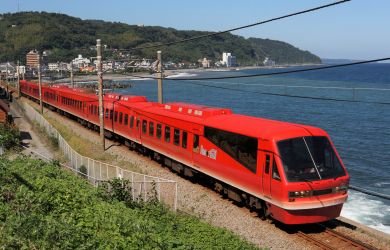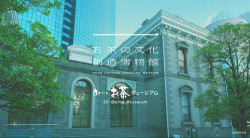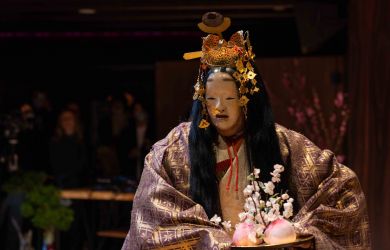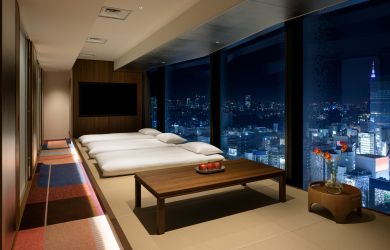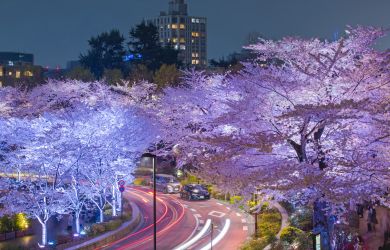
Originally published on metropolis.co.jp on June 2009

Marie Wanibe
Most people consider gyoza a side dish, some Chinese dumplings to go with a bowl of ramen. But Rouben Gyoza Kan, as you can tell from its name, gives them top billing.
You’ve never seen gyoza like these. Twelve pot stickers arranged geometrically in the pan, then fried with a bit of batter until they fuse together into a lacy network of crispness. Flipped out of the pan onto the plate, they resemble a gigantic, piping-hot, delicious snowflake (¥1,850).
No garlic is used in the fillings. No condiments of shoyu, red chili oil, or vinegar are on the table. The Chinese waiter will tell you that the taste is in the juice itself, inside the gyoza. Along the compass points of the snowflake, three dumplings will be filled with shrimp, crab and Chinese leeks; three with tiny clams and zucchini; three with baby scallops and mixed vegetables; and three with a variety of minced mushrooms. Let it snow, let it snow, let it snow.
With its stained glass windows and glowing neon beer sign, Rouben Gyoza Kan’s third-floor location might once have been a pub, but in fact it boasts a restaurant pedigree dating back to 1829 in China. That’s a few ticks of the second hand, though, compared to the 1,600-year tradition of Jiangsu-style cooking from Eastern China that the restaurant follows. Within that overarching style, Rouben specializes in a regional cuisine called Yangzhou, characterized by light, elegant cooking that preserves the natural qualities, appearance and color of the ingredients, and allows the original tastes to shine through. That’s why no garlic is found in the gyoza, and why no oily sauces are added.
The joint is long and narrow—the size of two Tokyo subways cars hitched together, and not much better to look at. Strings of red lanterns. Some dragon ornaments. A large golden folding screen sporting sparrows cavorting through chrysanthemums. And, incongruously, an oil painting of a pious, haloed Christian saint. The place is jumping when it’s busy, and you can barely hear the plaintive lament of the erhu BGM over the orders shouted in Chinese and the constant tinkle of the entrance bell as customers come and go.
Besides gyoza to die for, this place serves some of the best Chinese food in Tokyo—at fantastic prices. The menu (with English subtitles) lists over 140 dishes. Here are a few recommendations: the dim sum sets of steamed dumplings (¥850); the Emperor Hot Pot soup which is brought to the table with great ceremony and a banging gong (¥1,250); the bean curd sheet and coriander (#9 on the menu), a spicy fresh mix of linguine-like yuba and herb (¥850); and the stir-fried chicken with chili and peanuts (#60), which has a nice slow burn, underpinned with tangy black vinegar balanced by crunchy peanuts and a julienne of sweet red and green peppers (¥1,350).
